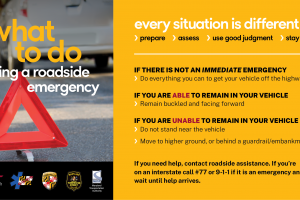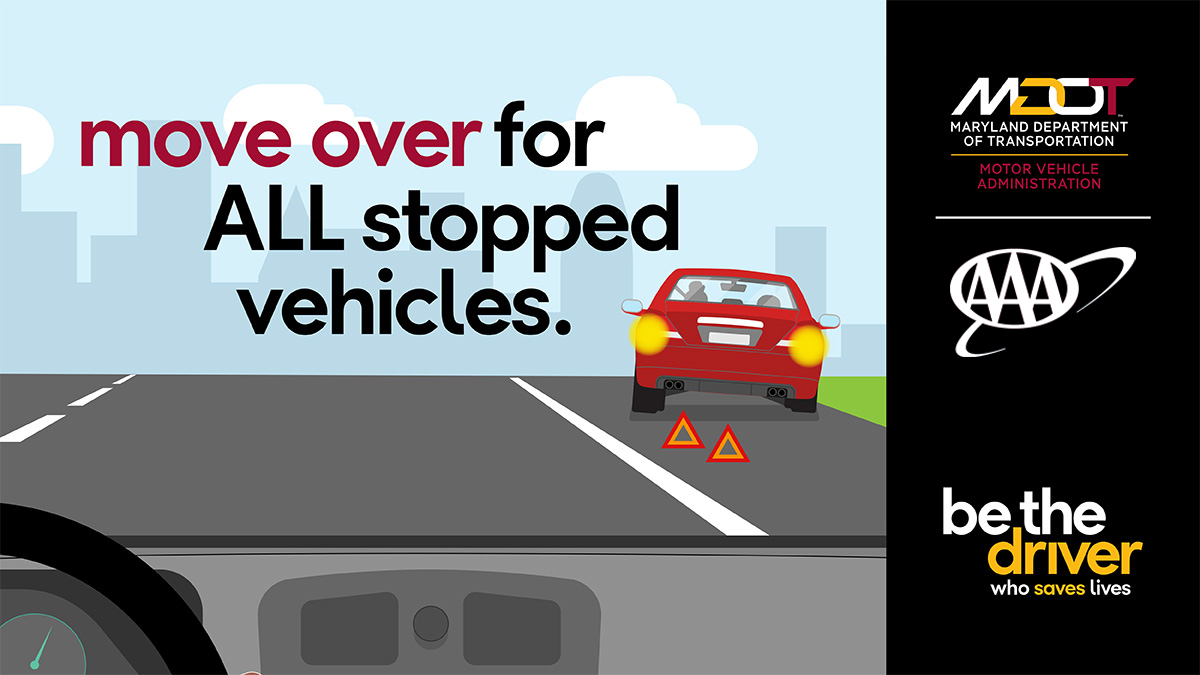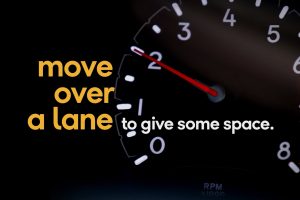What to do in a Roadside Emergency
Guide for motorists to keep them and others safe in the event of an emergency incident, minor vehicle crash while traveling, or a vehicle breakdown.
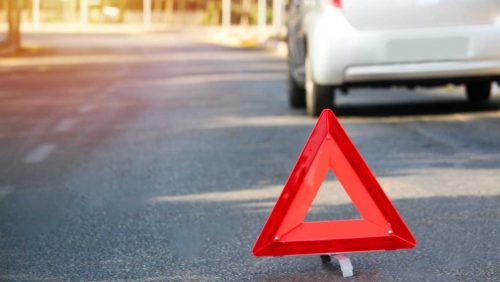
PREPARE
To avoid roadside emergencies and unnecessary stopping on roadways, motorists should first and foremost verify their vehicle is in good working condition before traveling.
Vehicle Checklist
- Properly Inflated Tires
- Plenty of Windshield Washer Fluid
- Inspected Belts and Hoses
- Filled Radiator
- Good Spare Tire
- Enough Fuel
- Ensure the Engine Has No Known Malfunctions
- Emergency Kit (including reflective triangles, a flashing warning light, flashlight, jumper cables, temporary flat tire repair, a blanket, water and a reflective vest)
ASSESS
Find a Safe Place
If your vehicle does become disabled, do your best to get it off the travel portion of the road and onto the shoulder, if possible. If there is an opportunity to reach an off-ramp or parking lot, consider that option, even if it means driving on a flat tire or damaging a rim. The same is true if you are involved in a minor vehicle crash and your vehicle can be moved. The further from the travel portion of the highway you can be, the safer you will be. Never stop or park in the triangular-shaped painted zones where a ramp exits the roadway.
Assess the Situation and Call for Help
Whether you are unable to move the vehicle from the travel portion of the highway or able to make it to the shoulder, it is important to assess your situation and determine the next steps to take. Every situation is different, but by identifying the options and using common sense, you are more likely to be in a safer situation.
As soon as you can, call for assistance.
If your vehicle has broken down on any of the State-owned primary roadways in Maryland (e.g., I-495, I-270, I-695, US 50, MD 295), please dial #77. The Maryland Department of Transportation State Highway Administration’s (MDOT SHA’s) Coordinated Highways Action Response Team (CHART) Emergency Response Technicians (ERTs), Maryland State Police, or the local police agency will come to assist you. If you are near an MDTA facility, #77 will connect you to MDTA Police. CHART ERTs are qualified responders able to assist with the following emergencies:
- Flat Tire
- Jump Start
- Water for Radiator (if the vehicle has stalled)
- Gas (approximately one gallon, if the vehicle has run out of gas)
- Directions (if a motorist is lost)
All motorists can call 9-1-1 for assistance. If you are in the travel portion of a roadway, contact emergency services immediately. Additionally, many insurance companies offer roadside assistance. If you have a roadside assistance plan, call them with the specifics of your location and description of your vehicle.
USE GOOD JUDGMENT & STAY VIGILANT
If You are Able to Remain in Your Vehicle
If you can remain in your vehicle, stay buckled and face forward, especially if you’re stopped on an elevated roadway such as a bridge or overpass. A potential danger, commonly referred to as the “moth effect,” describes how drivers often drift toward lights or objects that attract their attention – even if those lights or objects are located on a vehicle off the roadway, parked on the shoulder. Vehicles are equipped with multiple safety features that are designed to protect you and your passengers while the car is in motion or while parked. By remaining buckled and in the standard seated position, you are likely to be better protected if another vehicle hits your vehicle.
If You are Unable to Remain in Your Vehicle
If it is not safe or possible to remain within your vehicle, motorists and passengers are encouraged to evaluate the situation around them to determine an opportune time to exit the vehicle. When exiting the vehicle, move quickly away from the roadway and behind an embankment, traffic barrier or guardrail and, if possible, to higher ground. Face oncoming traffic and remain alert in the event a vehicle veers into your path. Do not stand near the vehicle. If you smell smoke or see fire, always consider your personal safety first before crossing any lanes of traffic.
If You are Stranded in the Travel Lanes
If you are stranded in the travel portion of a roadway, it is important to activate your warning lights, contact emergency services and then assess the situation if you should leave your vehicle for a safe location away from the highway. However, it is important to remember that crossing even one lane of a highway on foot can be extremely dangerous.
MOVE OVER OR SLOW DOWN
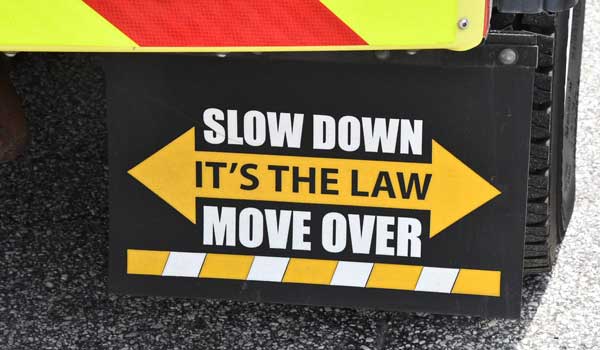
In Maryland, it is a state law to MOVE OVER or slow down when approaching any stopped, standing, or parked vehicle displaying warning signals – including hazard warning lights, road flares, or other caution signals including traffic cones, caution signs, or non-vehicular warning signs.
